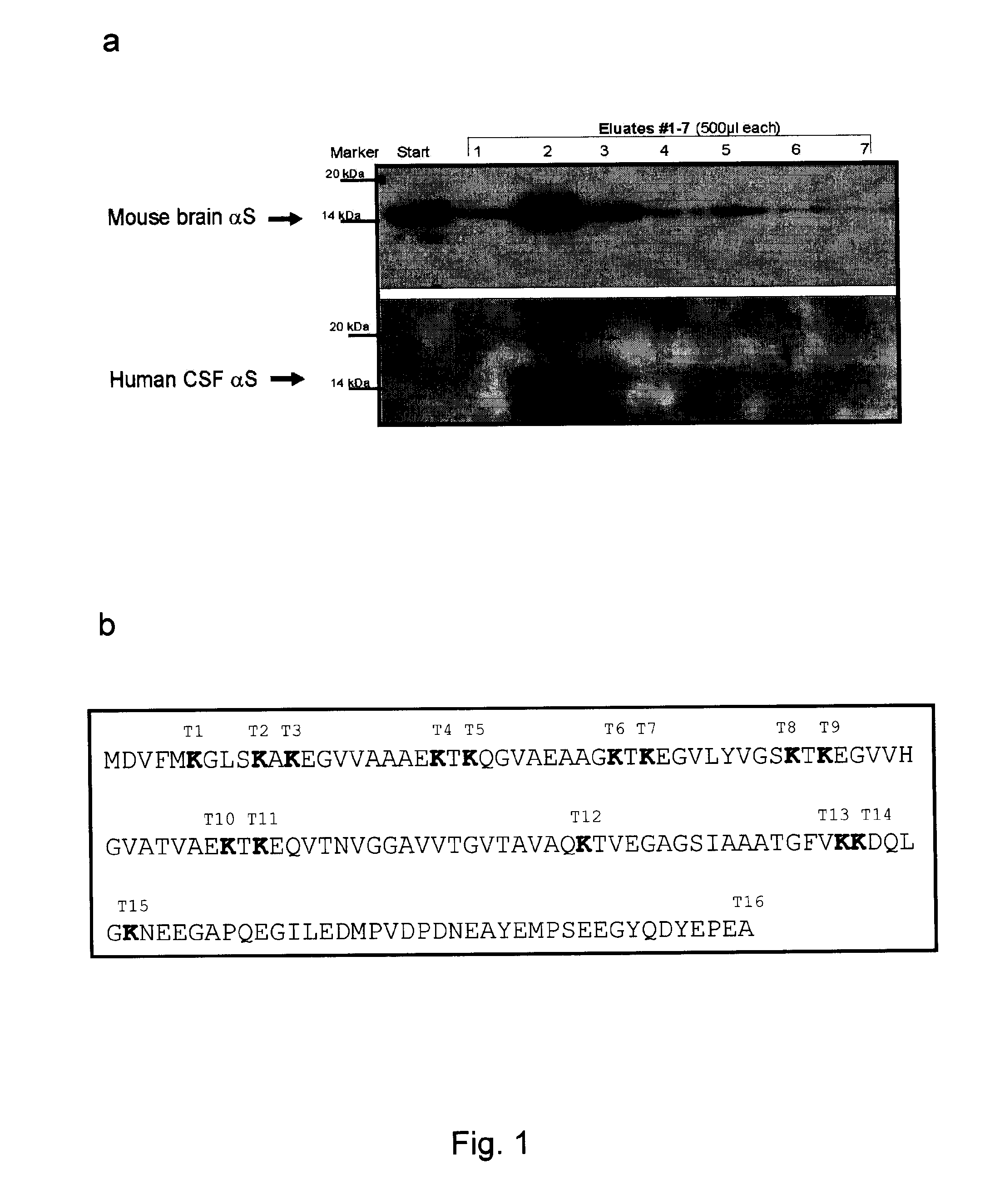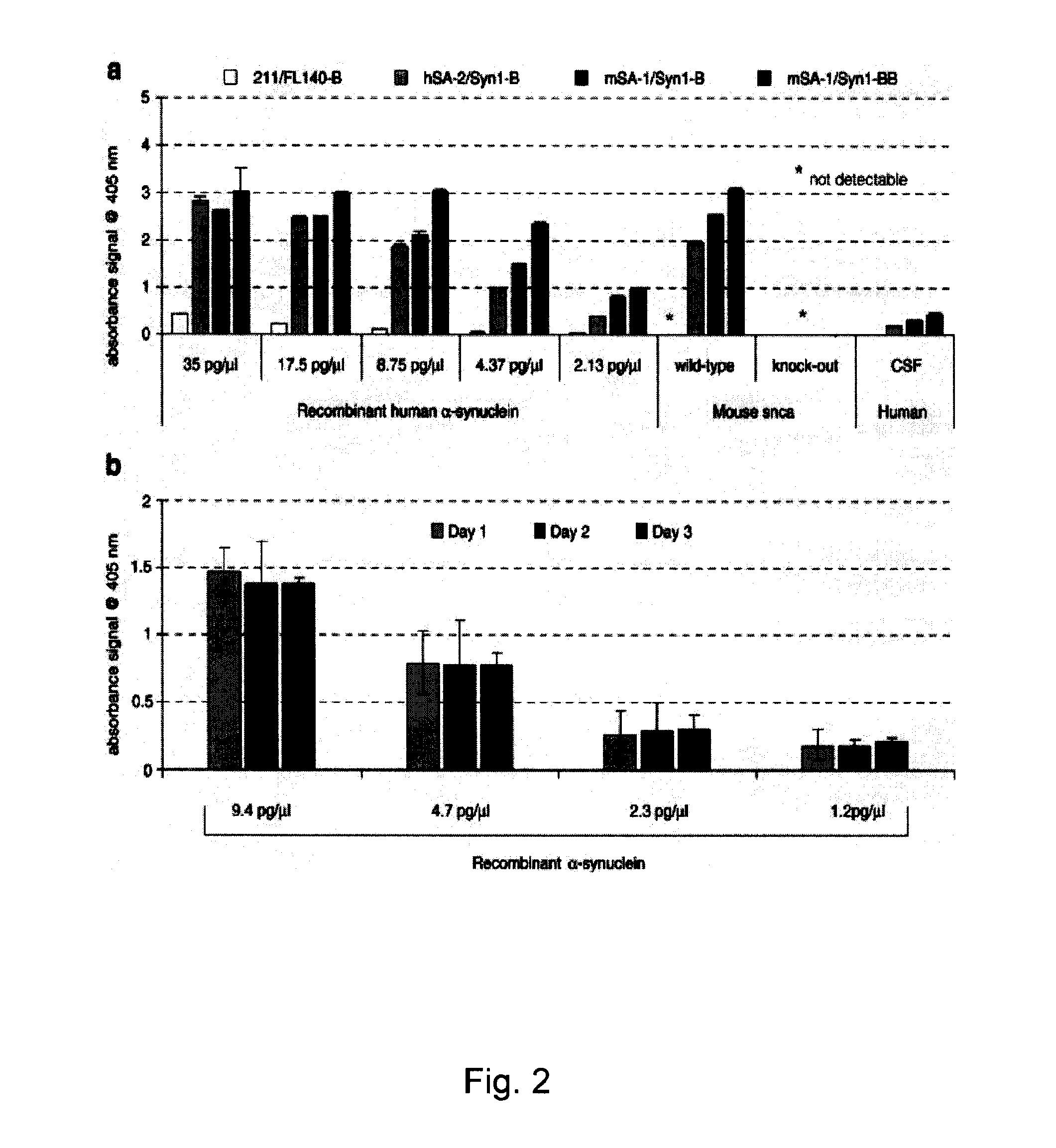Methods and kits for diagnosing neurodegenerative disease
a neurodegenerative disease and kit technology, applied in the field of neurodegenerative disease diagnostic tests, can solve the problems of low level contamination, non-uniform protein concentration variability, and limited usefulness, and achieve the effect of preventing slaughter
- Summary
- Abstract
- Description
- Claims
- Application Information
AI Technical Summary
Benefits of technology
Problems solved by technology
Method used
Image
Examples
examples
1. Direct Quantification of CSF α-Synuclein by ELISA and Cross-Sectional Study in Patients With Neurodegeneration
Materials and Methods:
Study Participants
[0134]CSF donors presented with a variety of neurological conditions for admission to the Departments of Neurology and Psychiatry at the University of Goettingen and the nearby Paracelsus-Elena Klinik (Germany). Samples from CJD patients were collected at the ‘National Surveillance Unit for Spongiform Encephalopathies’ in Goettingen under the same conditions. The study was approved by the ethics committees at the University of Goettingen, the board of registration in Hessen, Germany, and at Brigham and Women's Hospital. CSF collection was carried out according to the Declaration of Helsinki with the informed consent of all patients or their next of kin in the case of dementia. The specimens from 100 living donors were collected by routine lumbar puncture (LP) into serial polypropylene tubes, as described (Andreasen et al., 1999, Lew...
PUM
 Login to View More
Login to View More Abstract
Description
Claims
Application Information
 Login to View More
Login to View More - R&D
- Intellectual Property
- Life Sciences
- Materials
- Tech Scout
- Unparalleled Data Quality
- Higher Quality Content
- 60% Fewer Hallucinations
Browse by: Latest US Patents, China's latest patents, Technical Efficacy Thesaurus, Application Domain, Technology Topic, Popular Technical Reports.
© 2025 PatSnap. All rights reserved.Legal|Privacy policy|Modern Slavery Act Transparency Statement|Sitemap|About US| Contact US: help@patsnap.com



